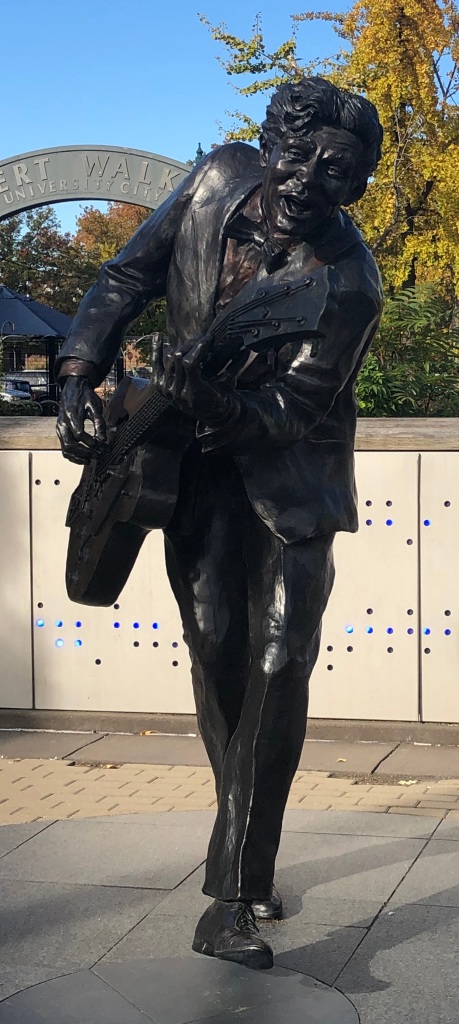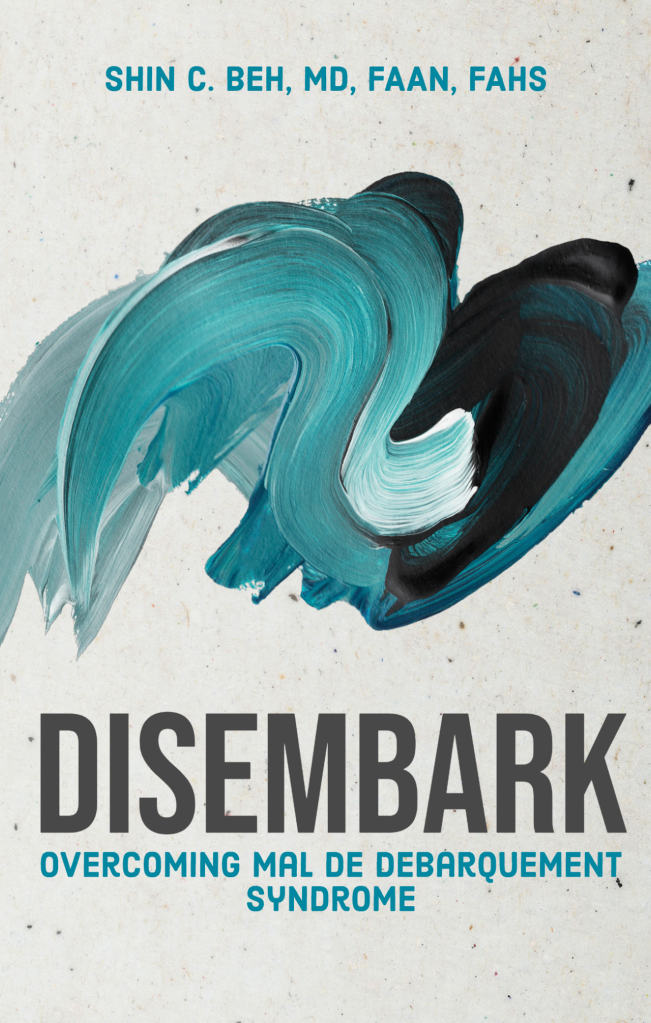Perci Diaconis and Frederick Mosteller are two mathematicians who published a study in 1989 exploring the science behind coincidence, which they defined as “a surprising concurrence of events, perceived as meaningfully related, with no apparent causal connection.” They observed how coincidences “can alter the course of our lives; where we work and at what, whom we live with, and other basic features of daily existence . . . .” Lately, I have been contemplating the surprising concurrence of events that has led me to where I am now in 2020, at the age of 60, and approaching what I hope will be the final third of my life.
I have happily admitted on many occasions that I am the luckiest man I have ever met. Usually, I am referring to the good fortune of being married to my amazing wife, whom I adore and cherish. I also know that a series of key events and decisions over the last 55 years has determined the path I have taken in my career, and I couldn’t have predicted at an early age how rewarding this journey would be. Of course, there are plenty of people who have had similar experiences and have advanced so much further in their professions than I ever will. I also know that the success I have enjoyed is not completely due to my knowledge, talent, and skills – not by a long shot. Again, I am a lucky guy.
I can almost see my vocational journey as a hiking trail, with switchbacks and long winding stretches, ups and downs, a few chance encounters, forks in the path, even a few rocky sections, all of which have led me to this place. How much is serendipity and how much is deliberate, I can’t say with any certainty. Perhaps the trailhead took the form of a set of The World Book encyclopedia our family purchased in the early 1960s, when I was a young child. I can’t remember how old I was when I started thumbing through the pages to look at the photographs and illustrations, but it was definitely before I started school. The World Book gave me an early appreciation for books and reading, for independent learning, and even for order – the set was arranged alphabetically, as were the articles within each bound volume.
The first marker on the trail was likely my assignment as a library assistant in elementary school. I have no recollection why either my teacher or our school librarian selected me for this responsibility, but I vividly remember removing cards from the pockets of books checked out by my classmates, using a stamp to imprint the due date on the card and the slip in the book, and filing the card in an oblong wooden box (likely with the librarian’s help). At an early age, I was granted opportunities to fall in love with books and reading, which I did. Like many adolescent boys of my generation, I became an enthusiastic fan of science fiction books by writers who defined the genre for the 20th century, such as Isaac Asimov, Robert A. Heinlein, and Clifford D. Simak.
My love of libraries mirrored my love for reading at an early age, and I visited them as often as I could. I must have had a natural appreciation for language, and the classes in high school where I performed best were in English. I was fortunate to have three outstanding English teachers from 7th through 12th grade. I attended a small high school, and I had each of these teachers for two years. They made grammar interesting for me, and they helped me appreciate the power of the written word. Under their instruction, I discovered the difference between writing that only entertains and that which enlightens, enriches, and provokes the reader.
I also had a true fascination for the natural sciences, probably nurtured by hours of emersion in The World Book. When I started at the local community college, I had big dreams of someday working in the field of medical technology. I knew hardly anything about it. I thought working in a hospital would equate to lots of money and prestige, but I knew I wasn’t ambitious enough to slug through medical school to become a doctor. Turns out I wasn’t even ambitious enough to pass college chemistry – it looked too much like algebra, which to this day baffles me.
With encouragement from advisors and after a careful look at the curriculum requirements, I decided an Associate’s Degree in Journalism would be my best hope of staying in school. This switchback in the trail also prompted me to start writing for the college newspaper, and one of my assignments was to report on a lecture being presented by a woman who had recently edited a collection of letters by a Georgia author. I was painfully immature and had virtually no appreciation for academic scholarship. My first draft of the article reflected my stupidity and shallowness, which my journalism professor was quick to point out to me. I had no idea what an important contribution the visiting scholar, Sally Fitzgerald, had made to the world of American literature nor how her work would impact my own world in the years ahead.
After graduating from the community college, my trail took me on an uphill stretch to a state college located about 45 minutes from my hometown. By then I had decided that a degree in English was a logical choice, although I was clueless about how I was going to find a career after graduating. I can’t imagine how concerned my parents must have been. However, I was becoming more serious about academics and was confident that I was a good writer – foolish boy. A few seasoned students in the English department had warned me about one professor, a woman with a reputation for pounding the ignorance right out of you. I signed up for one of her classes my second term there, having at least enough self-awareness that I needed discipline and a challenge. The first paper she returned to me looked as if she had slit an artery and bled out on the page. Clearly, I wasn’t such a gifted writer after all.
Meeting this professor was one of those life-changing chance encounters. I was not aware when I first arrived at this institution that its most famous graduate was Flannery O’Connor. I also did not know that the library was the steward of her most valuable personal and professional archive. My fellow English majors had informed me that the demanding professor was also the O’Connor scholar on campus and that she taught a course concentrating on the author’s work. She was the editor of the Flannery O’Connor Bulletin, a journal published by the college and the longest running scholarly publication devoted to a female writer in the country. Perhaps as an act of academic penance and atonement, I signed up for the O’Connor course for the summer session, which meant covering the author’s two novels, two collections of short stories, a volume of essays, and the letters edited by Sally Fitzgerald (the scholar I encountered just two years earlier), all in four weeks.
I had no memory of reading O’Connor in high school and didn’t know what to expect. In this class, I quickly realized her fiction was dark, perhaps even demented to my naïve way of thinking. The Catholicism was lost on this Southern Baptist lad, at least in the beginning, but I immediately recognized the backwoods Protestants that populated her stories. They could have been my relatives. The stories were violent and filled with strange and twisted characters – no happy endings, no riding off into the sunset. People sometimes came to gruesome ends. And yet, it was laugh-out-loud funny to me. The best part of all? It was literature. I was unequivocally hooked. This course truly stretched me, and I was proud to get a B when it was over. I requested to change advisors, wanting to be under this professor’s guidance for the remainder of my undergraduate tenure. I could not have known at that time the central role she and her O’Connor course were to play in my professional journey.
I took history courses as electives in the humanities for my major, enough to earn a minor in the field. Knowing I really didn’t want to teach high school English, I decided to stay on at the college and work toward an M.A. in history. I was a much more serious student now, and my grade point average reflected it. On-campus jobs opened up for me too, like working at a small education museum and archive. This college gave M.A. students an option to earn their degrees by either writing a thesis or by taking additional course work. Maybe I wanted to prove to myself, my professors, and my parents who had sacrificed so much to send me to school that I could write something worthy of a graduate degree, even from a small state college. So, I climbed that steep slope by writing about the desegregation of the county school system where my college was located, using a collection of oral history interviews I conducted with local educators, both white and black.
My graduate school adviser and the supervisor of my thesis was a member of the local public library board. Upon my graduation, he was kind enough to get my foot in the door with the library’s director, who was planning to hire a cataloger. After working a year at the public library, the director encouraged me and another employee to apply for library school at Emory University. It was a two-hour drive from where we lived, but our boss was generous and supportive enough to allow us to work four days a week and commute to Atlanta two days a week over the next two years to earn what the university called a Master of Librarianship. I will always be grateful to her for this opportunity, which launched my professional career. I eventually became the assistant director of the library, and after 12 years I was appointed the director when my boss left the position. I have written another post about some of the more memorable and bizarre experiences during my time working at the public library.
I stayed connected with the O’Connor scholar on campus and worked with her on several projects, the most ambitious being the Flannery O’Connor symposium in 1994. This four-day conference featured celebrated scholars, writers, visual artists, and performers, including Joyce Carol Oates, Lee Smith, Jill McCorkle, Louise Erdrich, Barry Moser, Polly Holliday, Leo Kottke, and once again, Sally Fitzgerald. People from the community who knew me at all were aware that Flannery O’Connor was my favorite writer, including the lawyer for the literary estate of the author, whose wife also happened to work with me as our children’s librarian. In a blog post from 2015, I wrote about another life-altering event – the day this lawyer walked into my office with a proposal for me to work for the executors of the estate to establish the Flannery O’Connor-Andalusia Foundation. I accepted the offer. This fork in the path allowed me to use my English and history degrees, my library training, and my administrative experience to help preserve and promote the legacy of a great American writer — what a privilege.
My mentor at the state college eventually retired, but she joined the board of directors of the O’Connor foundation, along with the man who followed her in the position. Both people have influenced and enhanced my life in ways I could never express, and I am forever in their debt. One of the grant-funded projects I initiated as the director of the foundation was a book publication, co-edited by the new O’Connor scholar. At Home with Flannery O’Connor is a collection of oral histories of people who knew the author during the time she lived at her family’s farm home, the headquarters for the foundation that we also operated as a historic house museum. Fortunately, I was familiar with oral history as a research tool from my master’s thesis work.
Flannery O’Connor lived at Andalusia for 13 years, which is exactly how long I remained there as the foundation’s director. In 2017, the property was transferred to O’Connor’s alma mater; however, by that time I had moved on to another job because my wife took a vice-president position at a small private college in northeast Georgia. Earlier that year, the president of this college had accepted a gift of property just north of the campus owned by a foundation of relatives and close friends of another Georgia writer named Lillian Smith. The organization was operating the Lillian E. Smith Center as an artist retreat and a literary landmark while also sponsoring programs for students and community members. The college president wanted to continue these activities and expand the center as an educational facility for his students, faculty, and staff. He had no one to manage the center, and I was as close to a perfect fit for the job as he was going to find.
We stayed at our respective jobs with this college for five years. I am still amazed at how much of what I had learned during the previous 30 years prepared me for this position: from property management to programming, from cataloging to curating, from historic research to historic restoration and preservation. I was even able to resurrect some of my early work experience serving as the college archivist for the president and working with the dean of libraries. I have written posts about Lillian Smith and her encounter with Flannery O’Connor – so many surprising connections and convergences that have touched my life.
In 2018, other opportunities took us away from my home state to Missouri. Through a friend of a friend, I met the dean of libraries at a state college in southwest Missouri where we live now. I find myself once again in a place where I can tap into several decades of professional experience to work on meaningful and rewarding projects, and it all just fell in my lap. I am a special projects coordinator working for the dean. I arrange author visits, public readings, and lectures. I also help install exhibits in the library. I conduct interviews for the library’s growing oral history collection. I am moderating a virtual book club for the alumni of the institution. Contrary to popular opinion, librarians do not just sit around a read all day. I always dreamed of a job where I could get paid to read. How lucky am I that part of my responsibilities are to read for a book club? Even better, I am learning new skills involved with editing videos that the library publishes through its YouTube channel, including the oral history interviews.
My father had several common refrains that contribute to the good memories I have about him. For the most part, he was a man of unquestioning faith, instilled and confirmed by a long life of Southern Baptist doctrine. When he recognized a surprising concurrence of events, he rarely wrote it off as coincidence, especially if the events had serious implications. Instead, he would declare, “As far as I’m concerned, the Lord arranges these things.” With pseudo sophistication and agnostic arrogance, many times I just shook my head and said, “I guess so, Dad,” not really agreeing with his assessment of how the universe works. In retrospect, given how my career path has carried me through the years to such wonderful destinations, maybe I need to hold out the possibility that Dad was right.












